

2020 has been a year of extremes, but there are some great stories to tell!
The new apple season is with us: our first dessert apple, Discovery is available and if not already on Supermarket shelves, it will be in the next few days.
Cherries are still available in Supermarkets - The EAM bought some 'Regina' in Tesco grown by Angus Davison in Hereford - a delicious variety!
English Apricots have been enthusiastically received as a 'testimonial from a consumer' demonstrates beautifully!
As the new season apples come on line, home grown 2019 season Gala and Kentish Kiss (Magic Star) offer great visual and eating value.
The variety Magic Star is marketed in Tesco under the name of Kentish Kiss!
English Apricots
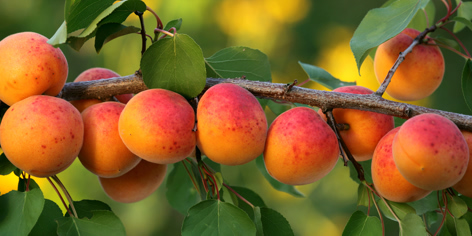
Earlier this week, The English Apple Man received an email from a reader who had purchased English Apricots in Tesco. It is always gratifying to receive praise from a consumer for a quality product!
Good morning
"I hope that I have found the right address for this mail?
I felt compelled to write and express my delight when tasting apricots grown by JL Pemberton and purchased on a recent online order from Tesco.
I have never tasted apricots like these. I usually buy apricots while holidaying on the continent and am delighted to say there is no comparison.
I warmly congratulate you on your product.
Kind regards
Celia Redding
The Apricots were grown by John Leigh Pemberton at Torry Hill in the village of Milstead near Sittingbourne in Kent.
In June 2017 The English Apple Man visited TORRY HILL APRICOTS to view.
Below: Discovery and right; Kentish Kiss (Magic Star)
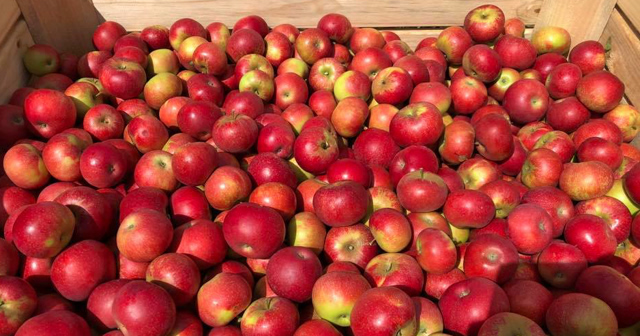
As the British Apple season get's under way with Discovery the first main variety now appearing on Supermarket shelves, it is good news that home grown Gala and Kentish Kiss (Magic Star) are still available from the 2019 season.
Below: left; Kentish Kiss Tesco label and right; Kentish Kiss apples
Pollination
The subject of pollination and the need for us all to maximise pollinator friendly plants in our gardens, is a subject close to my heart!
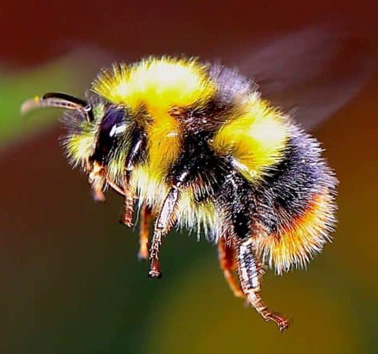 During the summer I have watched bees of various types: Bumble bees, Honey bees and wild bees.
During the summer I have watched bees of various types: Bumble bees, Honey bees and wild bees.
Spring has never truly arrived until you catch sight of your first bee, but do you know what species it is?
You might be surprised to learn there are more than 250 species of bee in the UK. Bumblebees, mason bees, mining bees - these are just one small part of a big, beautiful family.
There are 24 species of bumblebee in the UK, and personally, I don't think there is a better sight than these clumsy balls of fluff zooming from flower to flower on a sunny day. They are a social species, nesting in colonies ranging from a few dozen to several hundred bees
Mason Bees
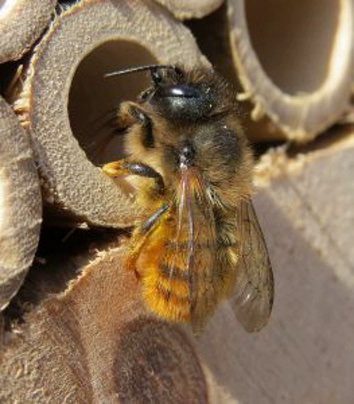 The mason bee you are most likely to see is the red mason bee. Look out for a black head, brown thorax and orange abdomen, and in females, a lot of fluff! You are likely to see red mason bees in built-up environments with plenty of gardens, churchyards and urban green space, and they are the bee most likely to be tucked up in your bee hotel.
The mason bee you are most likely to see is the red mason bee. Look out for a black head, brown thorax and orange abdomen, and in females, a lot of fluff! You are likely to see red mason bees in built-up environments with plenty of gardens, churchyards and urban green space, and they are the bee most likely to be tucked up in your bee hotel.
Their food plants include sallows, fruit trees and oil-seed rape.
The English Apple Man has a very 'bee friendly' - friend!
He sent me this superb story of how 2020 has been a very special year for his honey bees, with sumptuous leves of honey!
Bees. "To get a good yield, you need a colony in which lots (several thousand ?) workers survive the winter, a good strong queen with a high egg-laying potential, in a good location for nectar and pollen during the key months of April, May and June, and finally, good warm weather. With all this in place, in the UK, about 50lb of honey per year would be satisfactory. If you place the colonies in 10 acres of rape, or huge orchards, or in fields of beans, and the weather is good, you would get more.
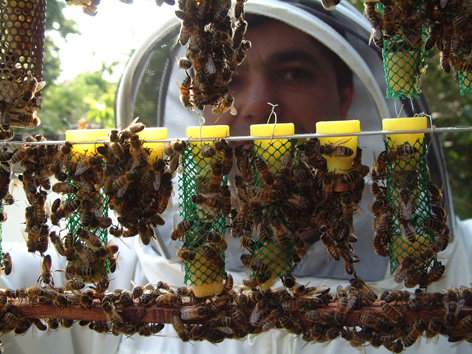 Two of my hives made over 400lb between them, by mid June. Both were strong colonies by April 1st (I had fed them honey earlier in spring, to encourage the queens to roll up their sleeves and get laying !) and then we had
Two of my hives made over 400lb between them, by mid June. Both were strong colonies by April 1st (I had fed them honey earlier in spring, to encourage the queens to roll up their sleeves and get laying !) and then we had
prolonged sunshine, and warmth, throughout April, May and most of June. They were making honey faster than I could extract it..the hives were 5 feet tall for several weeks.
Obviously, the location must have been rich in nectar and pollen...but these were not agricultural crops, or orchards, just mixtures of hedges, copses, and woods in the Thames valley near Wallingford. Later, in June/July, there was a large Lime honey crop, too, from several avenues of lime nearby.
I take no credit for this at all. I put it down mainly to the freakish weather.
One hive swarmed, as predicted..the other did not swarm, it just kept getting larger and larger. By the end of May, workers were carpeting the outside of the hive at night..no room in the dormitories, poor things...but it was warm, so no harm done. The "big" colony was stuffed with workers, up to 5 supers high. I have never seen a colony so large. Why it did not swarm, I have no idea. It certainly should have.
We have very good fruit tree crops this year, apples, pears, plums of all sorts, and nuts...we had only one frost, long after the fruits had set...but it has been dry, so I imagine that the fruit-size might be compromised".
Stay well,
Sean
That is all for this week
Take care
The English Apple Man